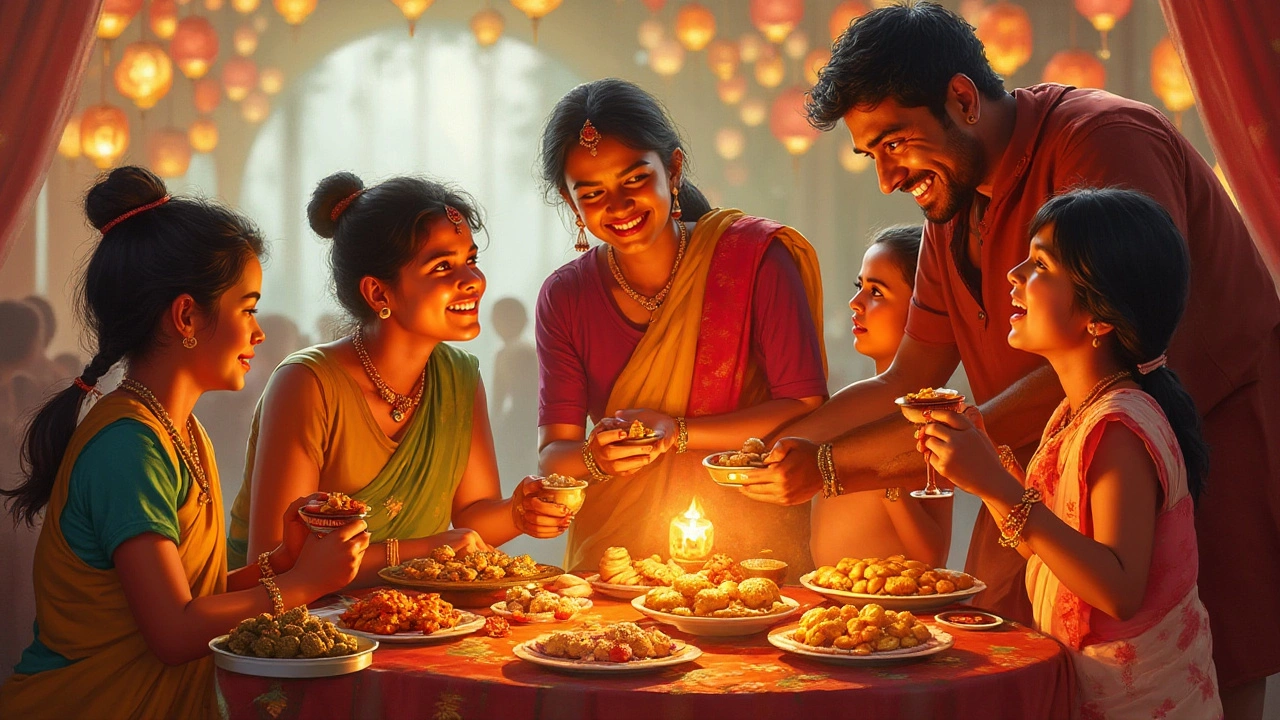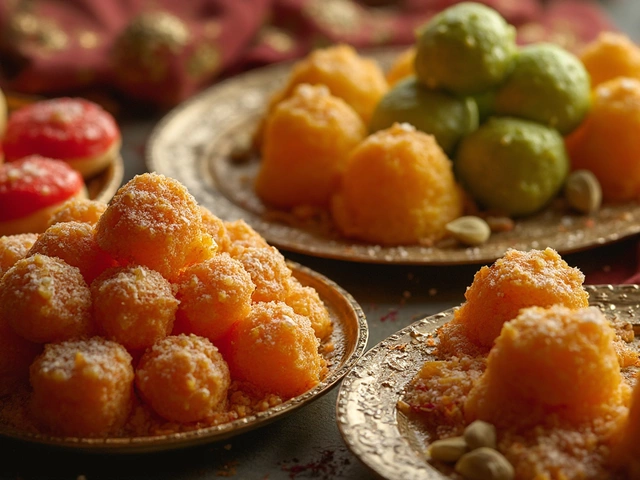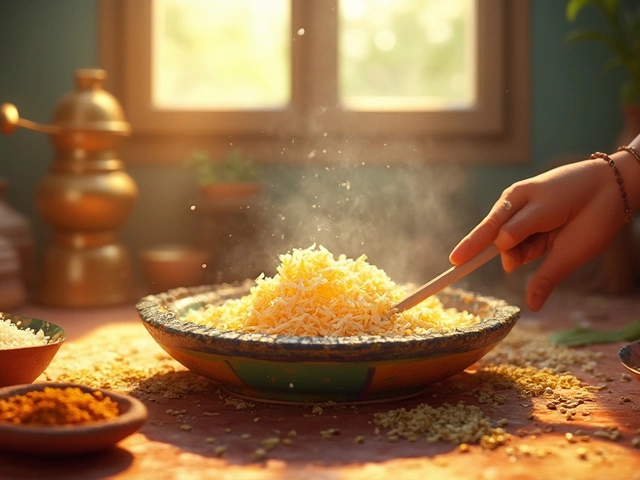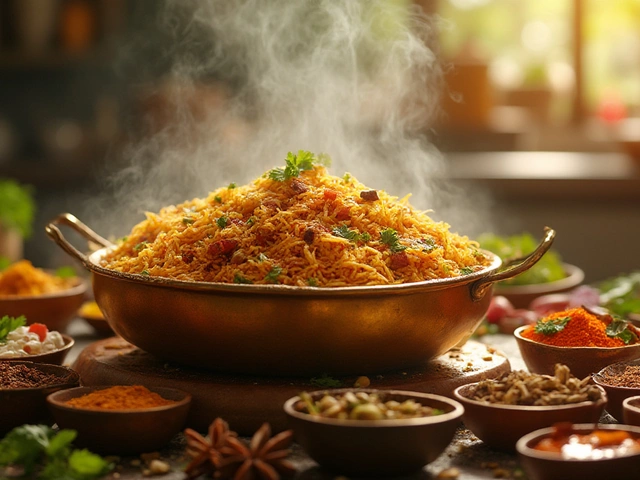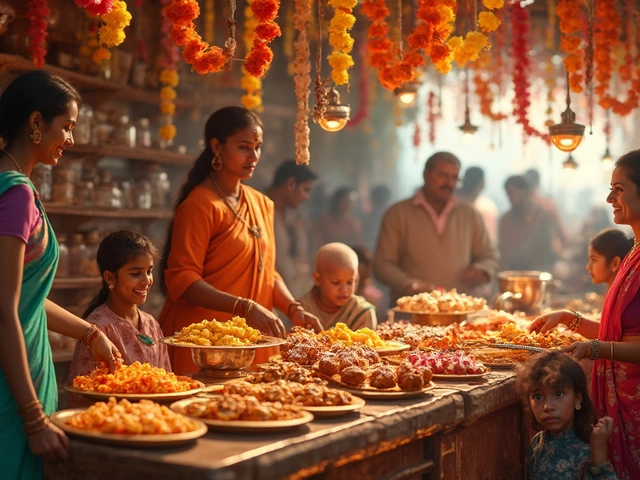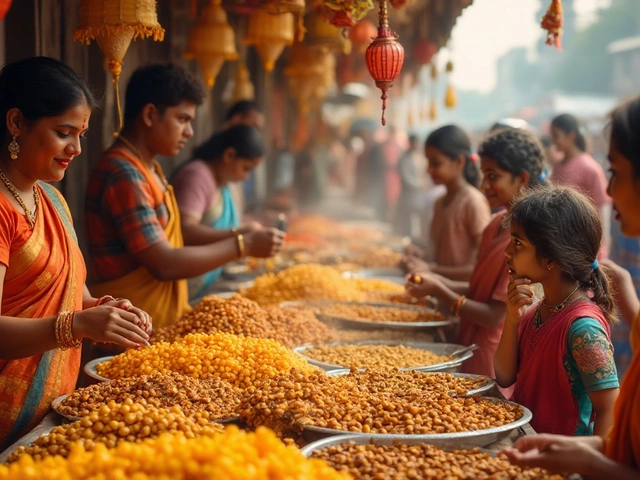In Hindu culture, sweets aren't just delightful to the palate; they hold a greater significance that ties into the very fabric of tradition and spirituality. For hundreds of years, these sugary confections have been more than mere treats — they are symbols of goodwill, prosperity, and gratitude. Whether it's Diwali, Raksha Bandhan, or a simple family gathering, the presence of sweets is a sign of celebration and joy.
The practice of giving and sharing sweets stems from deep-seated values of community bonding and mutual respect. Each type of sweet, be it laddu, jalebi, or barfi, carries its own story, often rooted in ancient scripture or regional history. Not only are these sweets a feast for the senses, but they also serve as a reminder of values that emphasize togetherness and spiritual abundance.
- Historical Origins of Sweets in Hindu Culture
- Symbolism and Spiritual Significance
- Popular Indian Sweets and Their Stories
- Festivals and the Role of Sweets
- Easy Indian Sweet Recipes to Try
Historical Origins of Sweets in Hindu Culture
The history of sweets in Hindu culture is as rich and multifaceted as the sweets themselves. Dating back thousands of years, these delectable delights have played an essential part in religious rituals, cultural traditions, and daily life. In ancient times, references to sweets can be found in the texts of the Vedas and Puranas, which are among the oldest sacred writings known to Hinduism. These documents often mention the preparation of sweet offerings, called 'Naivedyam,' for deities, showcasing the spiritual bond between sweets and divine worship.
Such customs reflect the Hindu philosophy of ‘food as an offering’ or ‘Prasad,’ which creates a bridge between the material and spiritual worlds. Various Indian sweets were not only consumed but also used to strengthen social and familial bonds. During significant events like childbirth, weddings, and religious festivals, sweets served as symbols of celebration, paving the way for modern-day traditions. A typical Hindu wedding, for instance, is incomplete without an arrangement of beautifully crafted sweets, each with its unique meaning and underlying story.
"Sugar and spice, and everything nice wouldn’t hold a candle to the allure of a ladoo at a Hindu festival," noted Dr. Nirmala Rao, a leading cultural historian.
The influence of other cultures played a prominent role in shaping the Indian sweet landscape. The Persian invasion brought with it ingredients like saffron and dry fruits, adding zest to the original sweets. Similarly, trade with the West introduced sugarcane to the Indian subcontinent, further revolutionizing the preparation of Hindu sweets. Each region of India began developing its own specialty sweets, adding layers of diversity and richness to the overall culture.
Across the Indian subcontinent, each region has cultivated its array of sweet delicacies. While the northern towns are famous for their syrup-drenched jalebi and creamy barfi, southern India boasts rich, coconut-infused treats like Mysore Pak. Even as time passed, the essential act of creating sweets from simple ingredients like jaggery, milk, and flour remained unchanged. This continuity reflects not only resilience but also creativity, as generations have strived to perfect their family recipes.
The role of the sweet maker or 'halwai' in Indian society has remained significant throughout history. These artisans were often revered for their skills and were the trusted confidants of households, especially during festive times. Once commissioned to bake or cook during special occasions, their creations symbolize the bond between taste, tradition, and memory. Although modern factories have industrialized much of sweet-making, traditional halwais remain cherished. Families turn to them for authenticity and to relive enduring memories connected to age-old recipes.
Symbolism and Spiritual Significance
Sweets in Hindu culture are more than just confections to be enjoyed for their taste; they are imbued with deep symbolic and spiritual significance. At the heart of many Hindu rituals is the idea of purity and sweetness, with sweets often being seen as an embodiment of these qualities. In religious ceremonies and festivals, sweets are offered to deities, symbolizing the devotee's sweet prayers and wishes for a harmonious and prosperous life. This offering, known as 'naivedya,' is an integral part of Hindu worship and signifies the devotee's gratitude and devotion toward the divine.
The symbolic importance of sweets extends to life's critical milestones, such as births, marriages, and housewarmings, where they are used to herald new beginnings and blessings. Each different sweet often carries its specific symbolism. For instance, the popular 'laddu' is associated with prosperity and fertility, signifying the prayer for abundance in all things. Similarly, 'payasam' or 'kheer' is associated with the sweetness and joy of love and familial bonds. Sharing sweets with friends and family during festivals like Diwali is not just a gesture of goodwill but a symbolic act of sharing joy and eliminating bitterness from one's life.
The spiritual aspect of sweets in Hindu culture can also be tied to ancient texts and mythology. According to Hindu mythology, even the gods have a fondness for sweets, which is why they are generously offered at temples. The famous story of Lord Krishna and the stealing of butter and sweets reflects the divine's playful love for sweet offerings. This playful relationship underscores a deeper spiritual message that even gods appreciate humanly efforts and offerings made out of love and devotion. Over centuries, the distribution of sweets has come to represent the spiritual message of charity and altruism as well, encouraging the community to look beyond personal satisfaction and to care for the happiness of others.
The wise saint Swami Vivekananda once said, "Each soul is a circle, the circumference of which is nowhere, but whose center is in one spot." This reflects the idea that sharing of sweets symbolizes the infinite circle of love, peace, and connection.
The preparation of these Indian sweets carries its unique spiritual ambiance. Traditional sweets are often made in the home, using family recipes handed down through generations, creating a spiritual bonding experience that unites the family in a shared activity. This shared experience can be viewed as a metaphor for the shared spiritual journey and the camaraderie that exists within community practices. The act of making sweets becomes itself an offering, a way to honor tradition, history, and spirituality, all in one go.
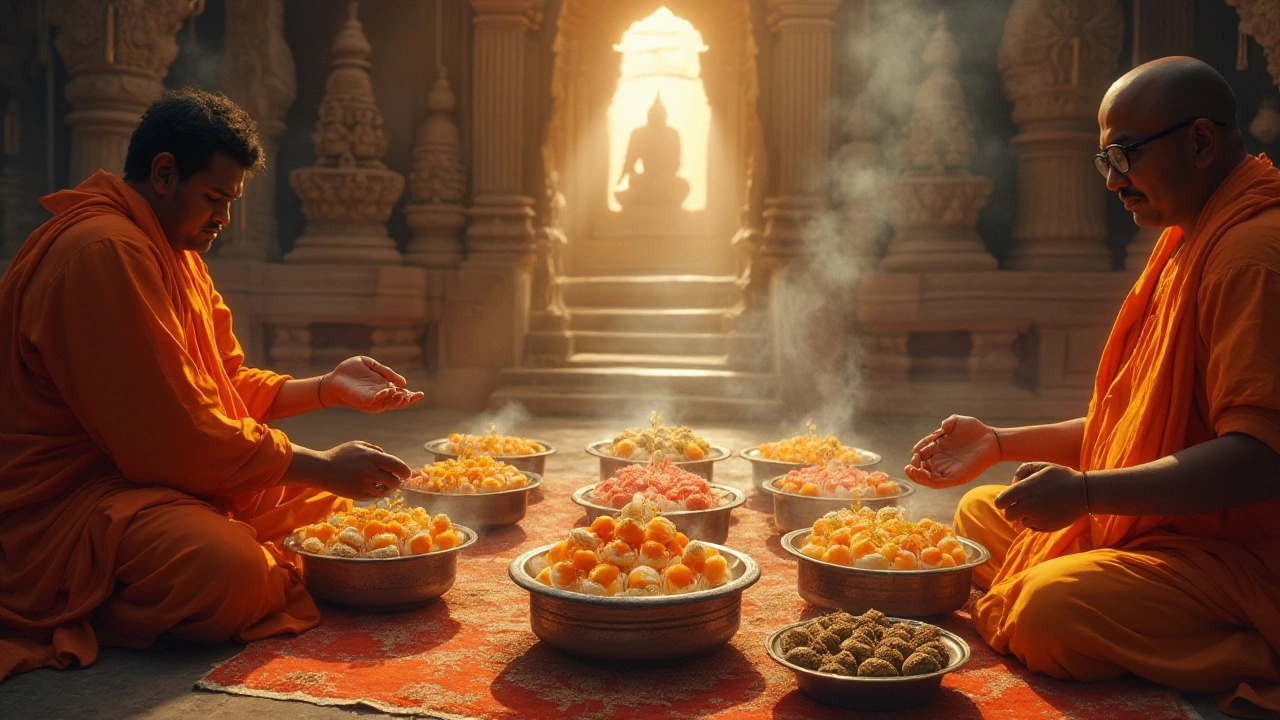
Popular Indian Sweets and Their Stories
India's rich and diverse cultural heritage is beautifully reflected in its array of sweets, each holding unique tales passed down through generations. One of the most beloved Indian desserts is the laddu. This sweet is found in almost every corner of the country, with its roots tracing back to ancient Sanskrit texts. Traditionally, laddus are made from varying ingredients like chickpea flour, sesame seeds, or coconut, depending on the region. These ingredients are mixed with ghee and sugar, then rolled into small balls. The round shape of the laddu symbolizes wholeness and unity, which is why they're often served at weddings and during religious festivals. In the historical context, it is said that Indian warriors during the medieval times used to consume laddus as a source of energy before battles.
The jalebi is another iconic Indian sweet with a fascinating backstory. This spiral-shaped dessert, relevant across India, is believed to have originated in the Middle East. Known as 'zalabiya' in Arabic, it made its way to India through cultural exchanges due to trade. Jalebi is made by deep-frying a wheat flour batter in circular shapes and then soaking them in saffron-infused sugar syrup. While delicious on its own, it presents an unforgettable experience when paired with rabri, a condensed sweetened milk. Festivals like Diwali and Ramadan see homes filled with the enticing aroma of hot jalebis, signifying joy and prosperity.
The barfi, with its vast array of variations, stands as a testament to the innovative spirit of Indian confectioners. From plain barfis made with condensed milk to those flavored with mango, chocolate, and even vegetables like spinach, the diversity is immense. One popular variant is the kaju barfi, where ground cashews are shaped into diamond-like sweets. These are particularly prevalent during Diwali, weddings, and other major celebrations. The use of silver or gold leaf, known as 'vark', to adorn these sweets adds a regal touch, which is believed to bring good fortune and splendor.
"The variety of Indian sweets represents the kaleidoscope of cultures in India, where each sweet is like a verse in an ancient epic that narrates human struggles and triumphs." – Rukmini Iyer, Culinary Historian
Kheer, or Indian rice pudding, is another classic dessert that spans the country with its variations. Made by slowly simmering rice in milk with sugar and aromatic spices like saffron and cardamom, kheer holds a sacred place in rituals and offerings. Its roots are deeply interwoven with Indian mythology, where it is often offered to deities and then distributed as prasad to devotees. Interestingly, in Southern India, a similar dish known as payasam is prevalent, and it often incorporates local ingredients such as coconut, jaggery, and bananas, highlighting the local palate's uniqueness. The sweetness of kheer represents the divine love and blessings from gods, making it a standard feature in temples and religious ceremonies.
In the ever-evolving tapestry of Indian culinary arts, sweets continue to hold their ground with an indelible charm. They are not just sugary indulgences but a part of the cultural identity that interweaves flavors with anecdotes of history, religion, and family heritage. Whether you are biting into a traditional pedha or savoring a modern twist like chocolate dosa, each piece delights the senses and enriches the soul, making sweets a timeless emblem of joy and celebration in Hindu culture.
Festivals and the Role of Sweets
In Hindu festivals, sweets are not merely indulgences crafted to please the taste buds. They are expressions of cultural heritage, embodying sentiments of joy, prosperity, and divine blessing. During festivals, homes light up with the aroma of freshly prepared Indian sweets, echoing the deep tradition that sweets are integral offerings in religious ceremonies. The likes of Diwali, the Festival of Lights, showcase an opulence of sweets being exchanged among family and friends. This isn't just about sharing food; it's about sharing a piece of happiness and spirituality.
Diwali, perhaps the most celebrated Hindu festival, sees families across the globe sharing sweets like laddu, jalebi, and kaju katli. These delicacies are meticulously made with ingredients such as sugar, cardamom, and saffron, which have their own symbolic meanings related to prosperity and purity. This exchange is rooted in the practice of erasing old grievances and starting anew with joy and sweetness. It is believed that offering something sweet to the gods brings good luck and prosperity to the household.
Another vibrant celebration is Holi, known for its colorful customs and playful spirit. Sweets like gujiya, a sweet dumpling filled with khoya and nuts, reflect the essence of Holi. Its crescent shape and sweet stuffing symbolize the cycle of life and continuity of culture. Many generations have handed down their secret recipes for these festive treats, each with variations that make them uniquely adapted to different regions. Such traditions are alive and thriving, and as varied as the sweets themselves, which reflects India’s rich diversity.
As culinary expert Pushpesh Pant puts it, "Indian sweets during festivals serve to remind people of the sweet relationships they cherish. It’s about life being rich and full."
The commitment to creating and sharing these sweets is deeply woven into the social fabric of the community, fortifying relationships and enhancing holistic well-being. During Raksha Bandhan, a festival celebrating the bond between brothers and sisters, sweets play a pivotal role. Sisters typically prepare sweets and tie a rakhi on their brothers' wrists, praying for their wellbeing. In return, brothers give gifts and promise protection. The shared sweetness is not just in the sugar, but in the love and bonds reinforced by such meaningful traditions.
The significance of sweets in Hindu festivals cannot be overstated. Whether it's the exchange of sweets at weddings, the birth of a child, or as an offering during the Navratri festival, these treats capture the essence of celebration. Each sweet, often carrying regional variations and family secrets, holds stories of tradition, cultural pride, and spiritual dedication. They are not just delicacies but are markers of India’s diverse spiritual landscape where Hindu celebrations dissolve differences, uniting individuals in shared joy and collective spirituality.
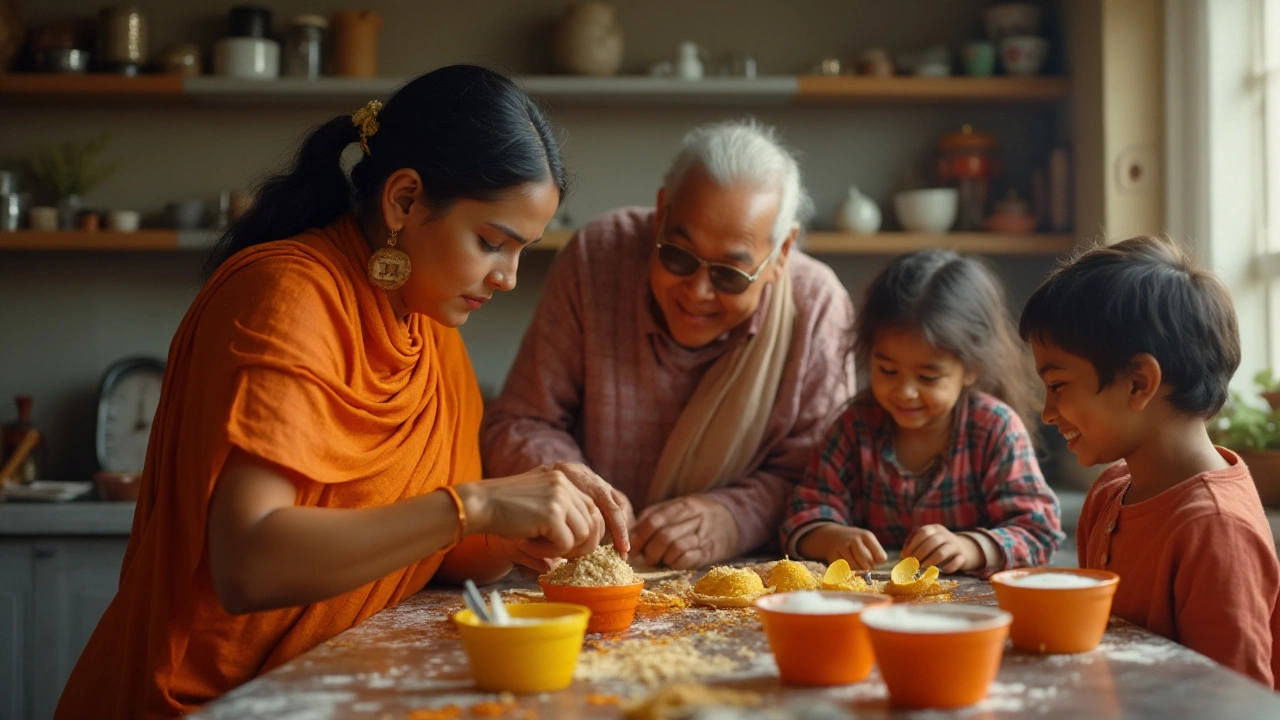
Easy Indian Sweet Recipes to Try
Delving into the world of Indian sweets uncovers a feast of flavors, textures, and aromas that are both delightful and inviting. These confections have transcended generations, offering not just taste but a profound sense of tradition and culture. Home-cooking enthusiasts can recreate these sacred sweets by following some simple recipes. Making sweets at home allows for a blend of creativity and reverence, evoking the authentic taste infused with personal touch. One of the easiest and beloved sweets is the melt-in-mouth barfi, made with condensed milk and sugar, often flavored with cardamom, which gives it that exalted aroma. This recipe requires a pinch of patience but is truly rewarding as the soft squares of joy finally set.
If you want to start with something more festive, consider attempting laddu, known for its round shape and delightful burst of sweetness upon biting. Traditionally made with flour, fat (often ghee), and sugar, this Indian sweet can be crafted with a variety of ingredients like lentils, nuts, or coconut, depending on the region’s culinary flair. The preparation is straightforward, involving a mixture that is rolled into small spheres. Children often enjoy this part, rolling the mixture between their palms to create perfect orbs of sweet indulgence.
Detailed Recipe for Coconut Laddu
- To begin, gather your ingredients: 2 cups of desiccated coconut, 1 cup of sweetened condensed milk, and 1 teaspoon of cardamom powder.
- In a pan, lightly toast the coconut over medium heat until it is just slightly golden, filling your kitchen with its nutty fragrance.
- Add the condensed milk and cardamom powder, mixing continuously until the mixture thickens and leaves the sides of the pan.
- Allow the mixture to cool slightly, enough to handle, and then roll into small balls using your hands.
- Coat each laddu in some extra desiccated coconut for a classic presentation.
Another remarkable choice is the heavenly jalebi, distinguished by its bright orange hue and intricate looped appearance. This sweet involves a thoughtful process of batter preparation, fermentation, and frying. The crispy, delicate spirals are then soaked in saffron-infused sugar syrup, captivating both the eyes and the palate. While it may sound complex, it is a worthy culinary adventure, thoroughly enjoyed by those who appreciate the balance of sweetness and zest.
"Food is not just about taste, it's a connection to our past and a celebration of culture." - Rujuta Diwekar, nutritionist and food author
For enthusiasts keen on simple recipes, kheer offers a fulfilling experience. Generally made with rice, milk, and sweeteners, it's one of those desserts that brings immediate comfort. A sprinkling of nuts and raisins, along with a touch of saffron, transforms this humble pudding into a regal dessert that's perfect for any occasion. Not only does kheer stand as a testament to the unifying thread of Indian sweets, but it also exemplifies how basic ingredients, when treated with care, can create something truly extraordinary. Enjoy indulging in these Indian desserts and sharing them with loved ones, a gesture more delicious than words.
- Poplular Tags
- Hindu sweets
- Indian desserts
- Hindu celebrations
- Indian sweets recipes





